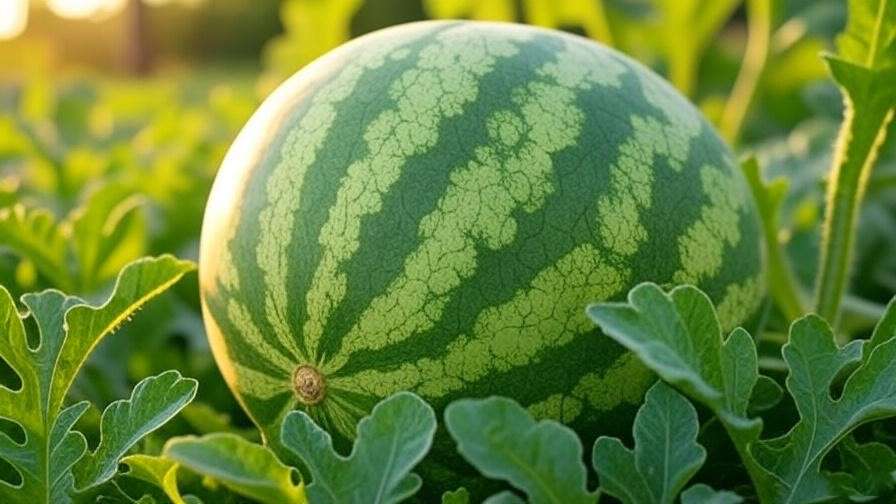Imagine slicing into a vibrant, juicy organic seeded watermelon, its sweet flesh bursting with flavor, grown right in your own backyard. There’s nothing quite like the satisfaction of cultivating this summer staple using sustainable, chemical-free methods. Whether you’re a seasoned gardener or a beginner eager to grow organic seeded watermelon, this guide will walk you through every step to achieve a bountiful, eco-friendly harvest. As a horticulturist with over a decade of experience in organic farming, I’ve honed the techniques shared here through years of hands-on practice. From selecting the best varieties to mastering organic care, this comprehensive guide ensures your watermelons thrive while aligning with sustainable gardening principles. Let’s dive into the art and science of growing organic seeded watermelons.
Why Choose Organic Seeded Watermelon?
Benefits of Seeded Watermelons
Seeded watermelons are a gardener’s delight, offering unmatched flavor and texture compared to their seedless counterparts. Varieties like Crimson Sweet and Sugar Baby deliver a crisp, sugary bite that evokes summer nostalgia. These melons are packed with vitamins A, C, and antioxidants, making them a nutritious addition to your diet. Unlike seedless varieties, seeded watermelons are often heirloom types, preserving genetic diversity and cultural heritage. Their seeds are also a bonus for future planting or even roasting as a healthy snack.
The Case for Organic Cultivation
Growing organic seeded watermelons benefits both the environment and your health. By avoiding synthetic pesticides and fertilizers, you protect soil ecosystems, promote biodiversity, and reduce chemical runoff into waterways. Organic melons are free from harmful residues, offering a safer, cleaner fruit for your family. Plus, with the rising demand for organic produce—evidenced by a 2023 USDA report showing a 12% increase in organic fruit sales—growing your own aligns with market trends and sustainable living goals.
Understanding Organic Seeded Watermelon Varieties
Popular Seeded Watermelon Varieties
Choosing the right variety is key to a successful harvest. Here are three popular seeded watermelon varieties suited for organic gardening:
- Crimson Sweet: Known for its deep red flesh and high sugar content, this variety matures in 85–90 days and thrives in warm climates. It produces 20–25-pound fruits, ideal for larger gardens.
- Sugar Baby: A compact variety perfect for smaller spaces, yielding 8–10-pound melons in 75–80 days. Its sweet, dark-striped fruits are a favorite for home gardeners.
- Charleston Gray: A classic heirloom with light green rinds and pinkish-red flesh, maturing in 85–90 days. Its 25–30-pound fruits suit regions with long, hot summers.
Select a variety based on your climate, garden size, and growing season length. For instance, Sugar Baby is excellent for cooler regions with shorter summers.
Sourcing Organic Seeds
To ensure an organic harvest, start with certified organic, non-GMO seeds. Reputable suppliers like Baker Creek Heirloom Seeds or Seed Savers Exchange offer high-quality, heirloom watermelon seeds. Verify certifications to avoid chemically treated seeds. Expert Tip: Store seeds in a cool, dry place to maintain viability, and check germination rates (typically 80–90% for fresh seeds) before planting.
Preparing Your Garden for Organic Watermelon Cultivation
Soil Requirements and Preparation
Watermelons thrive in well-draining, loamy soil with a pH of 6.0–7.0. Test your soil using a home kit or send samples to a local extension service for precise analysis. To prepare organically:
- Amend with Compost: Incorporate 2–3 inches of aged compost or well-rotted manure to boost nutrients and improve soil structure.
- Add Organic Matter: Use cover crops like clover or vetch in the off-season to enrich soil fertility.
- Avoid Compaction: Till lightly to aerate soil without disrupting microbial ecosystems.
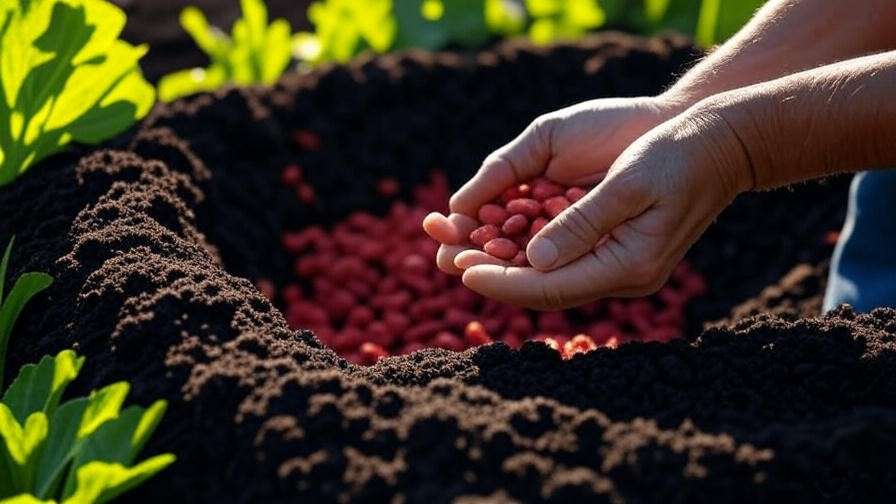
Expert Insight: Compost tea, brewed from compost and water, enhances soil microbial activity, promoting robust root growth.
Choosing the Perfect Location
Watermelons demand full sun (6–8 hours daily) and ample space for their sprawling vines, which can extend 10–15 feet. Choose a south-facing spot with good air circulation to prevent fungal issues. In windy areas, plant near a natural windbreak like a hedge or fence. For heat retention in cooler climates, consider black plastic mulch to warm the soil.
Timing and Climate Considerations
Plant when soil temperatures reach 70°F or higher, typically 2–3 weeks after the last frost. Refer to USDA hardiness zones for guidance:
- Zones 8–10: Plant in early spring (March–April).
- Zones 5–7: Wait until late spring (May–June).
In cooler regions, use row covers or cloches to protect young plants from unexpected frosts. Check local weather data to confirm optimal planting windows.
Planting Organic Seeded Watermelons
Starting Seeds Indoors vs. Direct Sowing
For warmer climates (Zones 8–10), direct sowing is ideal, as watermelons dislike root disturbance. In cooler regions, start seeds indoors 3–4 weeks before transplanting to extend the growing season. Use biodegradable pots to minimize transplant shock. Expert Tip: Soak seeds in lukewarm water for 12 hours to boost germination rates.
Planting Techniques for Success
- Spacing: Plant seeds 1 inch deep, with 3–4 feet between plants and 6–8 feet between rows to prevent overcrowding.
- Mounding: Create raised hills (6–8 inches high) to improve drainage and warm soil.
- Watering: Water thoroughly after planting, ensuring soil is moist but not waterlogged.
Aim for 2–3 seeds per hill, thinning to the strongest seedling after germination.
Organic Care and Maintenance
Watering Requirements
Watermelons need deep, infrequent watering to develop strong roots. Provide 1–2 inches of water weekly, adjusting for rainfall. Use drip irrigation to deliver water directly to the root zone, reducing leaf wetness and fungal risks. Common Mistake: Overwatering can lead to root rot, especially in clay soils. Check soil moisture with a finger test before watering.
Organic Fertilization
Feed plants with organic fertilizers like:
- Compost Tea: Apply every 2 weeks during vegetative growth.
- Fish Emulsion: Use at flowering to boost nitrogen and potassium.
- Bone Meal: Add at planting for phosphorus to support root development.
Follow a schedule: fertilize at planting, at flowering, and during fruit set. Expert Insight: Test soil nutrient levels mid-season to avoid over-fertilization, which can reduce fruit sweetness.
Weed and Pest Management
- Weed Control: Apply 2–3 inches of organic mulch (straw, wood chips) to suppress weeds and retain moisture.
- Pests: Watch for aphids, cucumber beetles, and spider mites. Use neem oil or insecticidal soap for control. Plant marigolds or nasturtiums nearby to repel pests naturally.
- Expert Tip: Introduce beneficial insects like ladybugs to manage aphid populations organically.
Supporting Watermelon Growth
Trellising and Support Systems
For gardeners with limited space, trellising is a game-changer. Organic seeded watermelons can be trained to grow vertically, saving ground space and improving air circulation. Here’s how to set up a trellis:
- Materials: Use sturdy T-posts, cattle panels, or A-frame trellises made from wood or metal.
- Setup: Secure the trellis firmly in the ground, ensuring it can support 20–30-pound fruits.
- Fruit Support: Create slings from old t-shirts or netting to cradle developing melons, preventing vine stress.
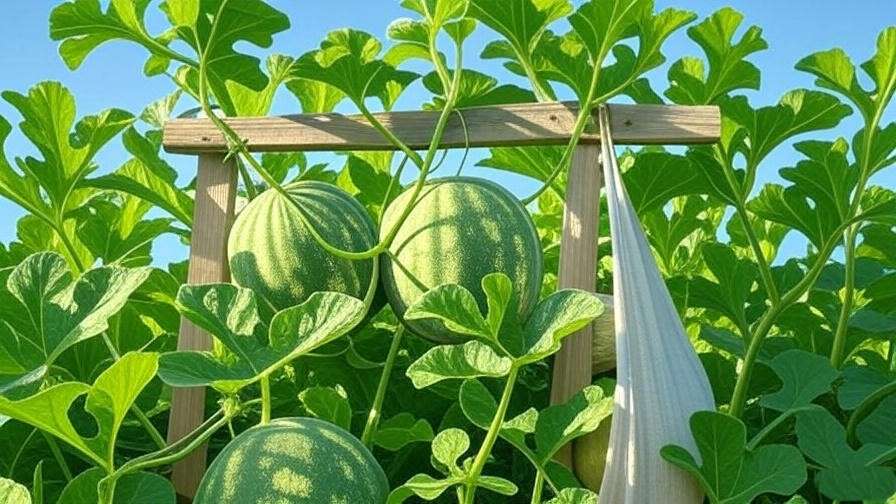
Example: A DIY trellis using 6-foot T-posts and wire mesh can support multiple Sugar Baby vines in a 4×4-foot garden bed. This method also reduces pest and disease issues by keeping fruits off the soil.
Pollination for a Bountiful Harvest
Watermelons rely on pollination for fruit production, primarily by bees. To ensure success:
- Attract Pollinators: Plant pollinator-friendly flowers like borage, zinnias, or cosmos near your watermelon patch.
- Monitor Bee Activity: Check for active pollination during flowering (typically 4–6 weeks after planting).
- Hand-Pollination: If bee activity is low, use a small brush to transfer pollen from male flowers (thin stem, no bulb) to female flowers (small bulb at base).
Expert Tip: Early morning is the best time for hand-pollination, as flowers are fully open and pollen is most viable.
Harvesting and Storing Organic Seeded Watermelons
When to Harvest
Timing is critical for peak flavor. Look for these signs of ripeness:
- Yellowing Belly: The spot where the melon rests on the ground turns creamy yellow.
- Dull Rind: The rind loses its glossy shine, appearing matte.
- Hollow Sound: Tap the melon; a ripe one produces a deep, hollow thud.
- Tendril Drying: The tendril nearest the fruit turns brown and shrivels.
Most varieties ripen in 70–90 days, depending on climate and care. Common Mistake: Harvesting too early results in bland, underdeveloped fruit, while waiting too long can lead to overripening or cracking.
Proper Harvesting Techniques
To harvest without damaging the fruit:
- Tools: Use a sharp knife or pruners to cut the stem, leaving 1–2 inches attached.
- Handling: Lift gently to avoid bruising; never pull the melon off the vine.
- Cleaning: Wipe the rind with a damp cloth to remove dirt, especially if storing.
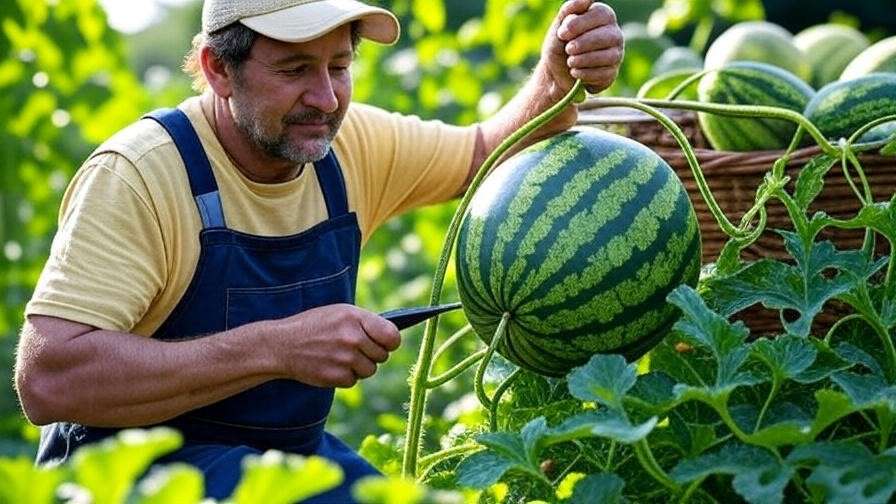
Expert Insight: Leaving a short stem helps prevent rot during storage, extending shelf life by up to a week.
Storage and Preservation
- Whole Watermelons: Store in a cool, dry place (50–60°F) for 2–3 weeks. Avoid refrigeration unless cut, as cold temperatures can degrade flavor.
- Cut Watermelons: Wrap tightly in plastic wrap and refrigerate for up to 5 days.
- Seed Saving: Scoop out seeds, rinse in a colander, and air-dry on a paper towel for 7–10 days. Store in an airtight container in a cool, dark place for up to 5 years.
- Recipe Idea: Use watermelon rinds for pickling (mix with vinegar, sugar, and spices) or add to compost for nutrient recycling.
Troubleshooting Common Problems
Addressing Growth Issues
Even with careful planning, issues can arise. Here’s how to tackle common problems:
- Yellowing Leaves: Often caused by nitrogen deficiency or overwatering. Test soil and adjust with compost tea or reduce watering frequency.
- Poor Fruit Set: Likely due to inadequate pollination or high heat stress. Hand-pollinate and provide shade during extreme temperatures (above 90°F).
- Stunted Growth: Check for compacted soil or nutrient imbalances. Aerate soil and apply organic fertilizers like fish emulsion.
Expert Solution: Conduct a mid-season soil test to pinpoint deficiencies and adjust care practices accordingly.
Disease Prevention and Management
Watermelons are susceptible to fungal and bacterial diseases, but organic methods can keep them at bay:
- Powdery Mildew: White, powdery spots on leaves. Prevent with proper spacing (3–4 feet) and good air circulation. Treat with a baking soda spray (1 tbsp baking soda, 1 tsp dish soap, 1 gallon water).
- Fusarium Wilt: Wilting vines with yellowing leaves. Use resistant varieties like Crimson Sweet and rotate crops every 3 years.
- Anthracnose: Dark spots on leaves or fruit. Remove affected parts and apply neem oil weekly.
Expert Tip: Rotate watermelon crops with legumes or grains to disrupt disease cycles and maintain soil health.
Sustainability Tips for Organic Watermelon Farming
Water Conservation Techniques
Watermelons require significant water, but sustainable practices can minimize waste:
- Mulching: Apply 2–3 inches of straw or wood chips to retain soil moisture and reduce evaporation.
- Rainwater Harvesting: Collect rainwater in barrels for irrigation, reducing reliance on municipal water.
- Ollas: Bury unglazed clay pots near plants, filling them with water for slow, efficient delivery to roots.
Expert Tip: Ollas can reduce water usage by up to 50%, ideal for drought-prone regions.
Soil Health and Long-Term Success
Healthy soil is the backbone of organic gardening. To maintain fertility:
- Crop Rotation: Avoid planting watermelons in the same spot for 3–4 years to prevent nutrient depletion and disease buildup.
- Cover Cropping: Plant clover or vetch in the off-season to fix nitrogen and improve soil structure.
- Composting: Recycle garden waste into compost to enrich soil naturally.
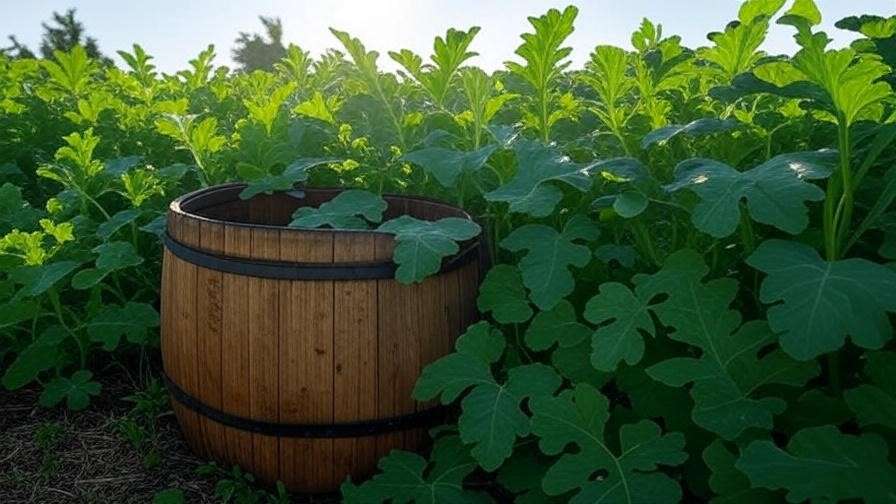
Example: After harvesting, plant a winter cover crop like hairy vetch to replenish nitrogen, preparing the soil for next season’s crops.
FAQs About Growing Organic Seeded Watermelons
- How long does it take for organic seeded watermelons to grow?
Most varieties mature in 70–90 days, depending on the variety, climate, and care practices. - Can I grow watermelons in containers?
Yes, compact varieties like Sugar Baby thrive in large containers (15–20 gallons) with proper drainage and support. - How do I know if my watermelon is organic?
Ensure seeds are certified organic, and avoid synthetic fertilizers or pesticides during cultivation. Check supplier certifications for authenticity. - Why are my watermelon vines producing flowers but no fruit?
This is often due to poor pollination. Attract more bees with pollinator plants or hand-pollinate during peak flowering. - How can I prevent pests without chemicals?
Use organic mulch, companion plants like marigolds, and natural sprays like neem oil to deter pests.
Conclusion
Growing organic seeded watermelons is a rewarding journey that combines sustainability with the joy of harvesting your own delicious fruit. By choosing the right variety, preparing nutrient-rich soil, and using organic care techniques, you can enjoy a juicy, eco-friendly harvest. From trellising to pollination, this guide has covered every step to ensure success, backed by years of horticultural expertise. Start your watermelon patch today, and share your experiences in the comments below! For more organic gardening tips, explore our articles on soil health, companion planting, and sustainable farming practices.

